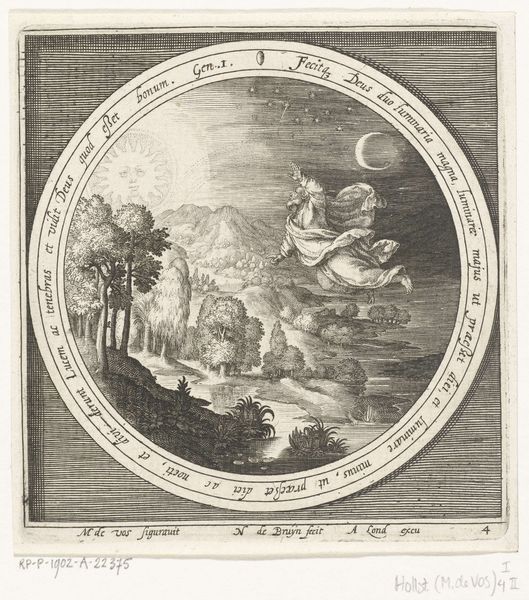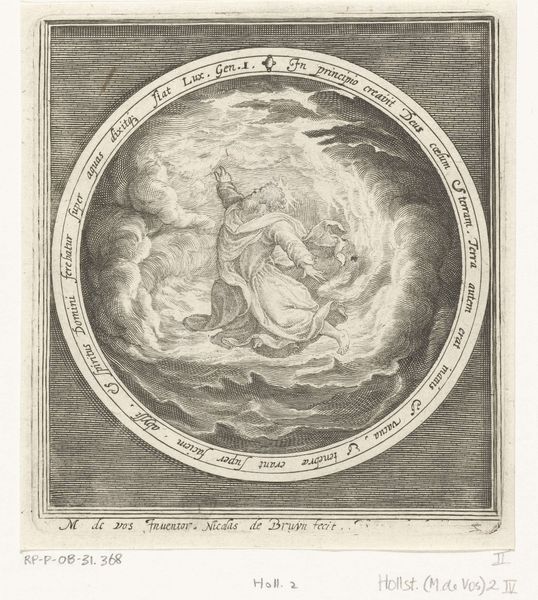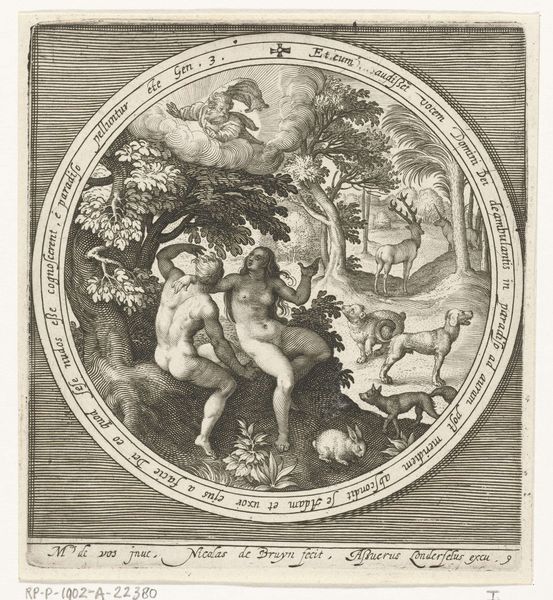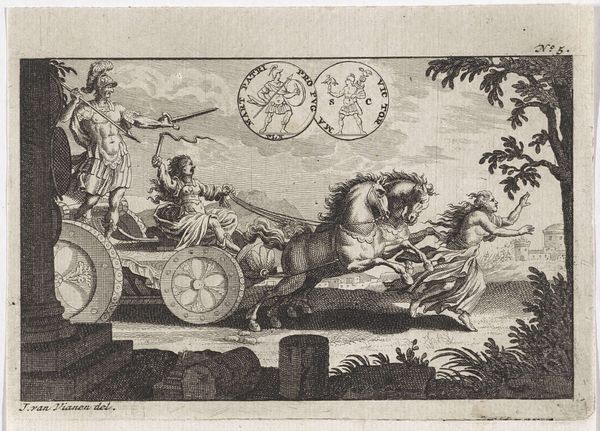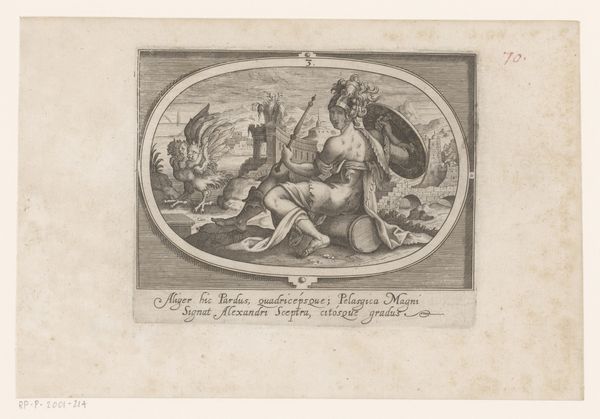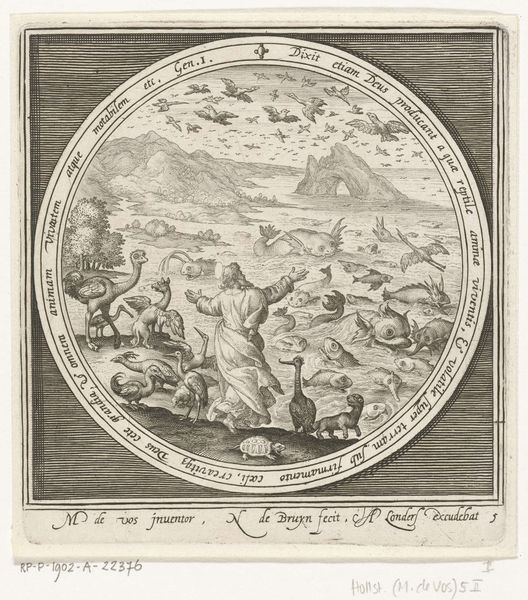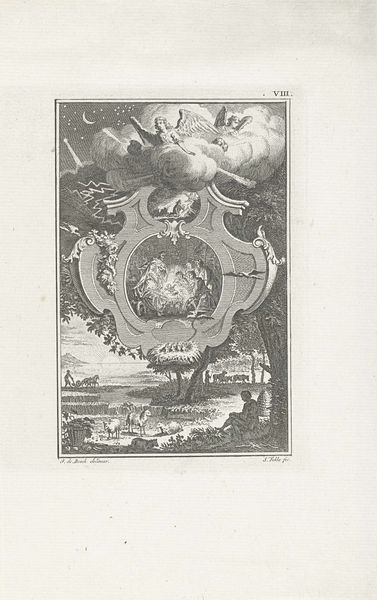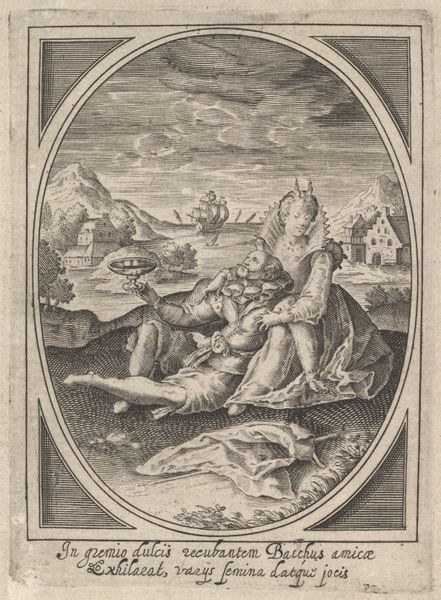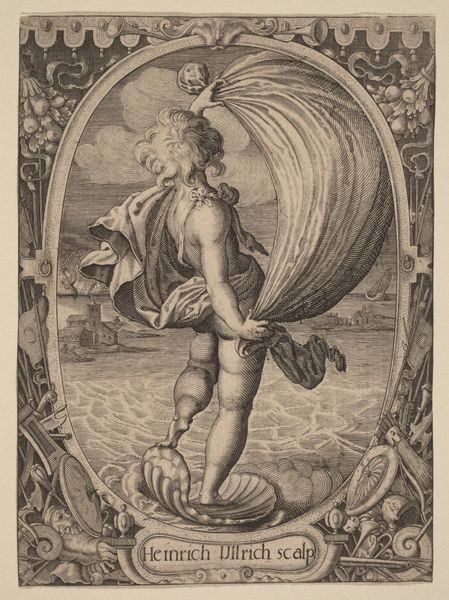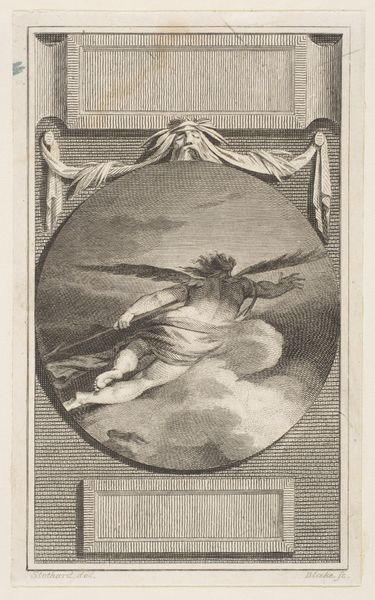
Tweede dag van schepping: God scheidt de watermassa's in hemel en zee 1581 - 1656
0:00
0:00
nicolaesdebruyn
Rijksmuseum
print, engraving
#
baroque
# print
#
figuration
#
line
#
history-painting
#
engraving
Dimensions: height 125 mm, width 113 mm
Copyright: Rijks Museum: Open Domain
Editor: This engraving, "Tweede dag van schepping: God scheidt de watermassa's in hemel en zee," created sometime between 1581 and 1656 by Nicolaes de Bruyn, shows a dynamic scene from Genesis. It's really striking how much texture he achieves with just lines. What jumps out at you? Curator: Well, looking at this from a materialist perspective, I immediately think about the production process. This is an engraving, so we’re talking about a highly skilled artisan meticulously carving into a metal plate, reproducing an image designed by someone else. Think about the labour involved. The cost, the skill. It’s fascinating how such a readily reproducible medium like print still speaks of the human touch, right? What sort of market would this piece have supplied to, given the time? Editor: I hadn't considered the labour intensity, I was focusing more on the overall effect, but that’s a great point. Given the subject matter, would the intended audience be mostly religious? How might they have consumed images like this? Curator: Exactly! Consider how engravings, like this one, democratized imagery. Before widespread printing, religious scenes were often confined to churches or the collections of the wealthy. This engraving, though likely still relatively expensive, brought these scenes into more homes, impacting how people visually understood biblical stories and internalized religious beliefs. Do you think that it speaks to religious propaganda or commercial industry better? Editor: Propaganda's an interesting word choice. Thinking about the Baroque style with all its dramatic flair, maybe a bit of both? It's meant to be impactful, memorable, to drive the narrative home, but with profit as the objective of Londerseel’s printshop? Curator: Precisely. By examining the materials and the methods of production, we start to understand not just the religious context, but also the burgeoning commercial networks that were shaping early modern Europe. Editor: So, by looking at the tangible aspects – the engraving itself and the industry that supported its creation – we uncover a more nuanced understanding of its cultural and historical significance. That’s helpful; thank you. Curator: Indeed! Examining the “how” helps us understand the “why,” and, consequently, "what does it *mean*?"
Comments
No comments
Be the first to comment and join the conversation on the ultimate creative platform.
